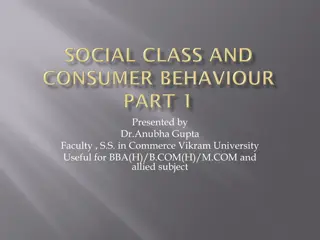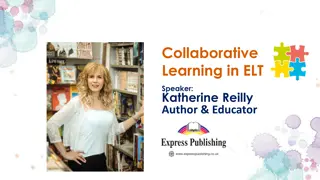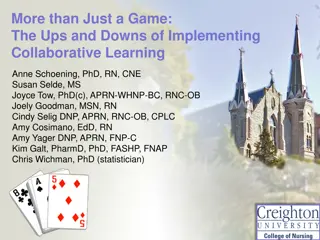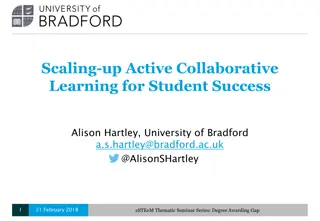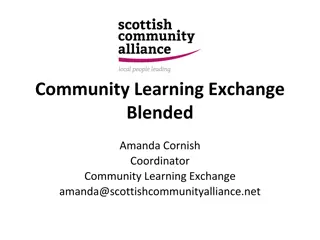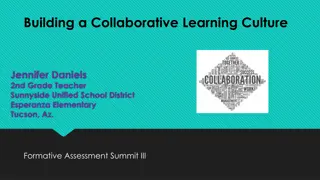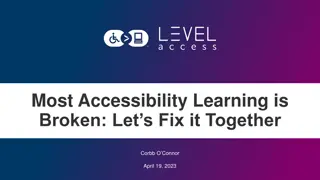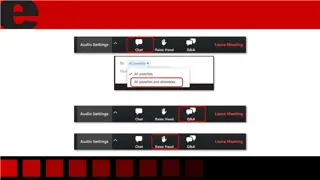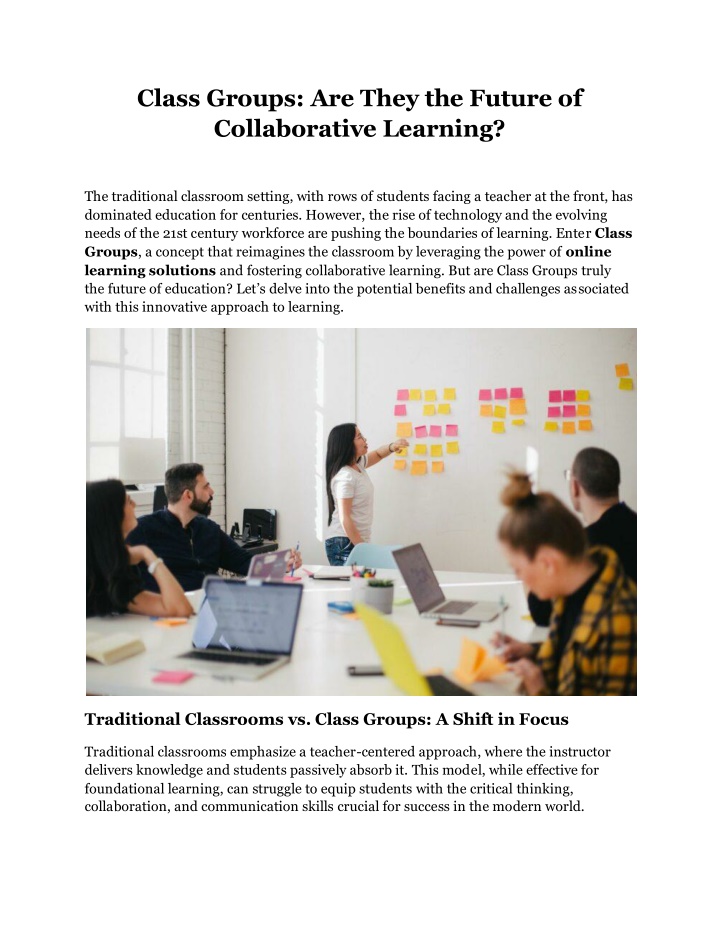
Class Groups Are They the Future of Collaborative Learning
The traditional classroom setting, with rows of students facing a teacher at the front, has dominated education for centuries. However, the rise of technology and the evolving needs of the 21st century workforce are pushing the boundaries of learning. Enter Class Groups, a concept that reimagines the classroom by leveraging the power of online learning solutions and fostering collaborative learning. But are Class Groups truly the future of education? Read full article //explainlearning.com/blog/class-groups-are-they-the-future-of-collaborative-learning/
Uploaded on | 5 Views
Download Presentation

Please find below an Image/Link to download the presentation.
The content on the website is provided AS IS for your information and personal use only. It may not be sold, licensed, or shared on other websites without obtaining consent from the author. If you encounter any issues during the download, it is possible that the publisher has removed the file from their server.
You are allowed to download the files provided on this website for personal or commercial use, subject to the condition that they are used lawfully. All files are the property of their respective owners.
The content on the website is provided AS IS for your information and personal use only. It may not be sold, licensed, or shared on other websites without obtaining consent from the author.
E N D
Presentation Transcript
Class Groups: Are They the Future of Collaborative Learning? The traditional classroom setting, with rows of students facing a teacher at the front, has dominated education for centuries. However, the rise of technology and the evolving needs of the 21st century workforce are pushing the boundaries of learning. Enter Class Groups, a concept that reimagines the classroom by leveraging the power of online learning solutions and fostering collaborative learning. But are Class Groups truly the future of education? Let s delve into the potential benefits and challenges associated with this innovative approach to learning. Traditional Classrooms vs. Class Groups: A Shift in Focus Traditional classrooms emphasize a teacher-centered approach, where the instructor delivers knowledge and students passively absorb it. This model, while effective for foundational learning, can struggle to equip students with the critical thinking, collaboration, and communication skills crucial for success in the modern world.
Class Groups, on the other hand, represent a shift towards modern learning. They utilize online learning platforms to deliver core content through engaging video lectures, interactive exercises, and gamified learning experiences. This frees up valuable classroom time (whether physical or virtual) for collaborative activities, discussions, and peer-to-peer learning. Think of it as a two-pronged approach: independent learning facilitated by online platforms and collaborative learning fostered within the Class Group environment. Benefits of Class Groups for 21st Century Learning Here s how Class Groups could revolutionize education and prepare students for the future: 1. Enhanced Collaboration and Communication Skills: Explain Learning, a website dedicated to promoting effective learning strategies, emphasizes the power of collaboration. In a Class Group setting, students work together on projects, solve problems, and engage in discussions, honing their communication skills and learning to navigate diverse perspectives. 2. Deeper Understanding Through Shared Learning: The act of explaining a concept to another person strengthens your own understanding. Class Groups create opportunities for students to teach and learn from each other. This reciprocal learning fosters a deeper grasp of the material and encourages critical thinking. 3. Development of Problem-Solving Skills: Working collaboratively on real-world projects or simulated scenarios within a Class Group allows students to develop creative solutions to complex problems. This prepares them for the collaborative nature of work in the 21st century. 4. Increased Flexibility and Personalized Learning: Online learning platforms provide students with the flexibility to learn at their own pace, revisit content as needed, and focus on areas requiring additional attention. This personalized learning approach caters to individual learning styles and needs. 5. Global Community and Cultural Exchange: Online Class Groups can connect students from different countries and backgrounds. This fosters cultural exchange, broadens perspectives, and prepares students to thrive in an increasingly interconnected world.
Challenges of Implementing Class Groups While Class Groups offer exciting possibilities, some challenges need consideration: 1. Digital Divide and Technology Access: Not all students have equal access to reliable internet and technological devices. This digital divide could create an uneven playing field within a Class Group. Addressing this disparity is crucial for equitable access to this learning format. 2. Effective Group Management: Facilitating successful Class Groups requires skilled educators who can create engaging learning activities, manage online discussions, and ensure all members actively participate. 3. Fostering a Supportive Online Environment: Maintaining a respectful and inclusive online environment is critical. Strategies to combat cyberbullying and promote online etiquette within Class Groups need to be established. The Future of Collaborative Learning: A Hybrid Approach The idea of Class Groups replacing traditional classrooms entirely might not be the most realistic scenario. However, a hybrid approach that combines the strengths of both could be the ideal solution. Students could utilize online platforms for independent learning and then come together in Class Groups, either physically or virtually, to collaborate, discuss, and apply their knowledge. Conclusion: Class Groups offer a promising path towards a more engaging and effective learning experience. By fostering collaboration, personalized learning, and critical thinking skills, they could be a valuable tool in preparing students for the demands of the 21st century. However, ensuring equitable access to technology and equipping educators with the skills to manage online learning environments are crucial considerations. Ultimately, the future of learning may lie in a well-balanced approach that leverages the strengths of both online learning platforms and collaborative learning experiences within Class Groups. This hybrid model has the potential to empower students to become active participants in their learning journey, fostering a love of knowledge and preparing them to thrive in an ever-evolving world. Content Source Class Groups: Are They the Future of Collaborative Learning


